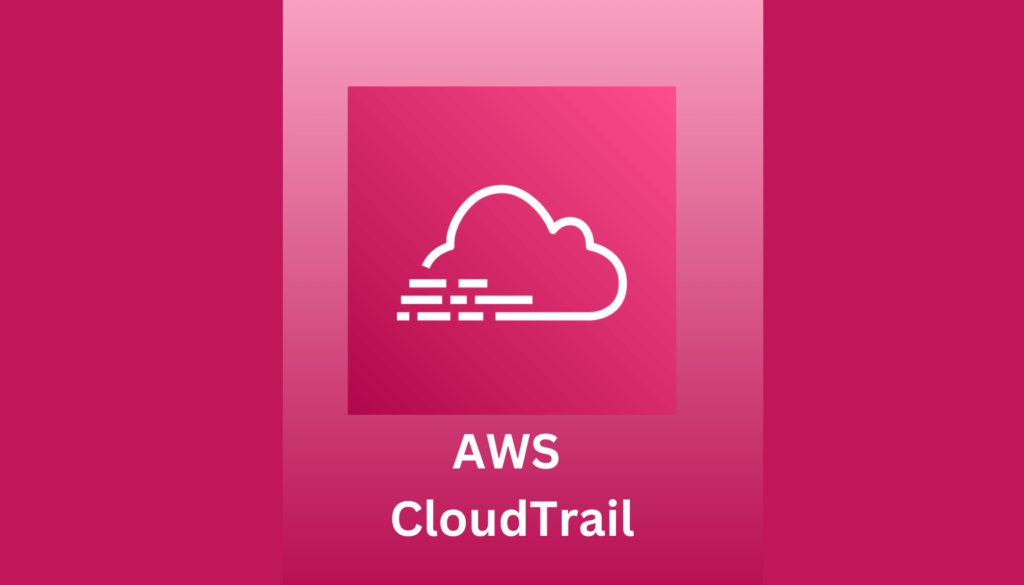What is AWS CloudTrail?
AWS CloudTrail is an essential service within the AWS ecosystem designed for auditing, security monitoring, and operational troubleshooting. It records and logs user activity and API usage across AWS services. CloudTrai’s primary function is to provide a reliable and detailed account of actions within an AWS environment.

Source: AWS CloudTrail
Core Features of AWS CloudTrail
CloudTrail provides a multitude of features, including an unparalleled derailed log for visibility into use and resource activities, capturing critical information like th identity of the API caller, the time of the API call, the source IP, and the response elements returned by AWS services. Providing invaluable details for tracking changes to AWS resources. Let’s look at some of the key features of CloudTrail.
- Event Logging: CloudTrail classifies its event logging into two primary types: Management events and Data events. Management events provide insights into control plane operations performed on AWS resources, such as creating, modifying, or deleting S3 buckets. Data events, on the other hand, log actions within a resource, like reading or writing an S3 object. This comprehensive logging is highly beneficial in closely monitoring and auditing changes within the AWS environment.
- Integration with AWS Services: CloudTrail is highly compatible with other AWS services. It can collect configuration items from AWS Config, capturing detailed records of resource configuration and compliance history. It also assimilates audit evidence from the AWS Audit Manager, which is pivotal in demonstrating compliance with various controls. Such integrations expand CloudTrail beyond mere event logging, making it a central component of the AWS Security and compliance framework.
- CloudTrail Lake: CloudTrail Lake acts as a managed data lake, enabling the capture, storage, access, and analysis of user and API activity for auditing and security purposes. It allows users to store their activity longs, both from AWS and non-AWS resources, for up to seven years. This feature is particularly beneficial for IT auditors requiring immutable records and security administrators aiming to verify compliance with internal policies.
- Trails: Trails in CloudTrail are mechanisms for recording and storing AWS account activities. They facilitate the delivery of event logs to services like Amazon S3, Amazon CloudWatch Logs, and Amazon EventBridge. Trails can be configured for a single AWS account or multiple accounts through AWS Organizations, thereby enabling a centralized view of activities across the entire organizational landscape.
- Continuous Monitoring and Security Analysis: CloudTrail facilitates continuous monitoring and security analysis of your AWS environment. By integrating with services like Amazon CloudWatch and AWS CloudFormation, CloudTrail enables real-time alerting and automated responses to specific activities or API usage patterns. This feature is crucial for the immediate detection of unauthorized or abnormal activities, enhancing the overall security and compliance posture of your AWS infrastructure.
AWS CloudTrail Pricing Overview
When considering AWS CloudTrail for auditing, security monitoring, and operational troubleshooting, it’s essential to understand its pricing structure, which is designed to accommodate a range of use cases from basic to advanced needs.
AWS CloudTrail offers a pricing structure that includes both a free tier and a paid tier. The free tier is particularly useful for testing and users of limited use, allowing them to view, search, and download the most recent 90-day history of their account’s management events at no charge.
AWS CloudTrail Free Tier Offering
AWS CloudTrail is in AWS’s always free services with limited monthly access.
- Event History: User can view, search, and download the most recent 90-day history of their account control plan.
- Lake: Offers a 30-day free trial with a limit of
- 5 GB of data Ingest
- 5 GB of data Scan
- Retain data at no additional cost
- Trail: Allows delivery of one copy of ongoing management events to an Amazon S3 bucket.
AWS CloudTrail Paid Tier
For more extensive usage, and advanced features like CloudTrail Lake, which offers comprehensive data ingestion, retention, and analysis capabilities users are required to upgrade to a paid tier. The pricing for CloudTrail Lake and other advanced features is based on the volume of data ingested and analyzed, as well as the retention period of it.
Users can choose between one-year extendable retention pricing and seven-year retention pricing, depending on their usage and retention needs. Additionally, CloudTrail offers pricing options for creating trails, where users can deliver management events to an S3 bucket and optionally to CloudWatch Logs. Check out the AWS CloudTrail pricing page for an up to date pricing.
Cost Optimizations
1. Selective Event Logging
Focus on capturing only critical events relevant to specific security and compliance needs. This approach reduces the volume of data logged, thus lowering the storage and processing costs.
2. Data Compression and Lifecycle Management
Compressing CloudTrail log files and implementing S3 lifecycle policies to transition older logs to more cost-effective storage classes like S3 Glacier can significantly reduce storage costs over time.
3. Optimizing CloudTrail Lake Usage
Keep track of the amount of data being ingested into CloudTrail Lake and adjust your data retention policies accordingly. By ensuring that only essential data is stored, you can strike a balance between meeting audit requirements and maintaining cost efficiency.
4. Integrating with Cost Management Tools
Utilizing tools such as AWS Cost Explorer and AWS budgets to monitor CloudTrail costs can help in identifying patterns in usage and give potential areas for cost reduction.
5. Monitoring and Alerts
Utilize Amazon CloudWatch alerts to monitor for spikes in CloudTrail usage and log volume. This can help in the early detection of potential cost overruns and facilitate timely adjustments.
Conclusion
Start by understanding your requirements for AWS CloudTrail. We always recommend looking for an expert who can understand and implement a proper service deployment that is both performance-efficient and cost-effective.
Ready to elevate your AWS strategy?
[Reach out] for specialized guidance to ensure your setup is both cost-effective and high-performing.

